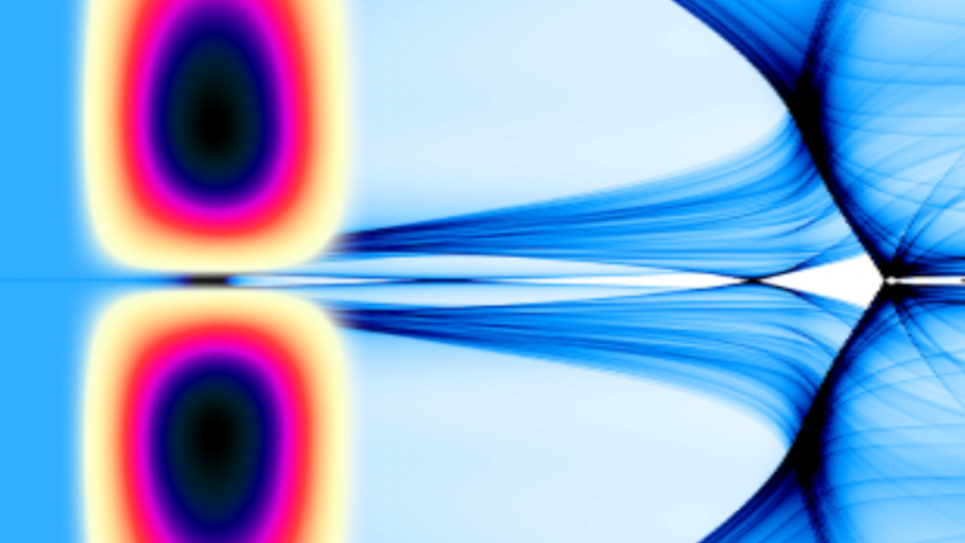
QPAD simulation of the wake made by a laser with OAM.
With this INCITE project, the team involved has enhanced the particle-in-cell code OSIRIS to launch lasers with arbitrary spatial-temporal profiles.
The past several years have seen tremendous progress in how to spatially and temporally structure laser pulses, which are rapidly opening up new research topics. These include laser pulses in which the peak intensity location moves at superluminal or subluminal speeds in vacuum (a flying focus), the phase fronts have corkscrew shapes (orbital angular momentum), and the polarization direction of the laser varies within the phase front of the laser. Furthermore, it is also possible to create intense particle beams with flying foci through the use of a chromatic lens. While the vacuum propagation properties of these lasers and particle beams are well-understood, the interactions of such lasers and beams with plasmas is just beginning to be understood.
The team leading this project has recently enhanced the particle-in-cell code OSIRIS to launch lasers with arbitrary spatial-temporal profiles. Using this capability, they are aiming to undertake a computational effort that lays the foundation for understanding such interactions while also developing near-term applications. The research will be discovery-driven, but with an eye towards making transformative progress in important applied areas: (i) making compact and efficient plasma-based accelerator and light sources, and (ii) generating ultra-high-power lasers through Raman and Brillouin amplification.